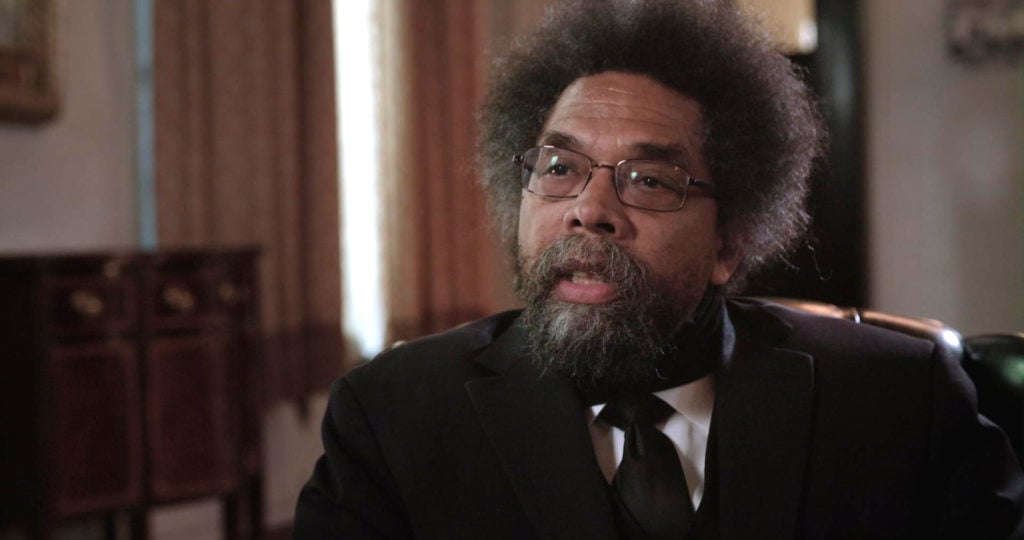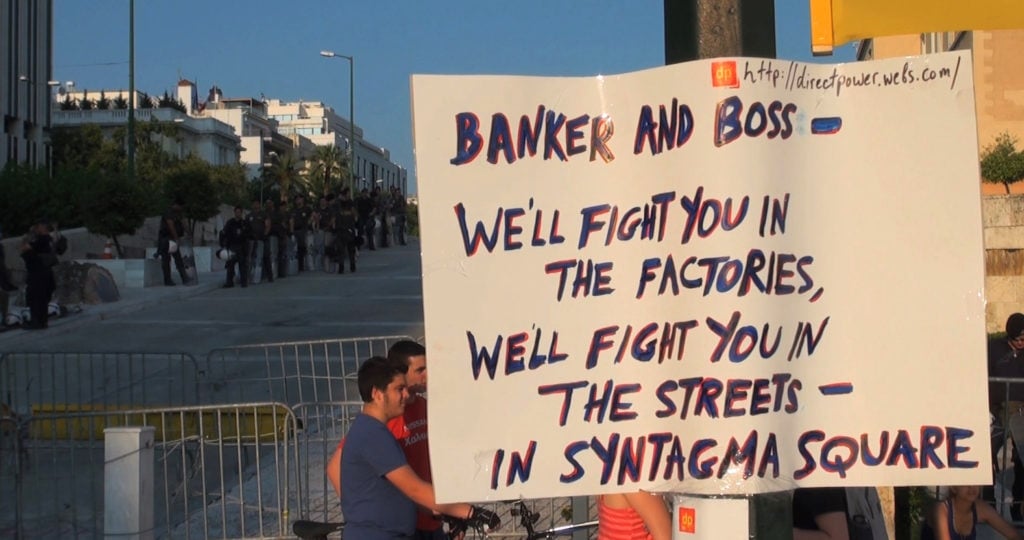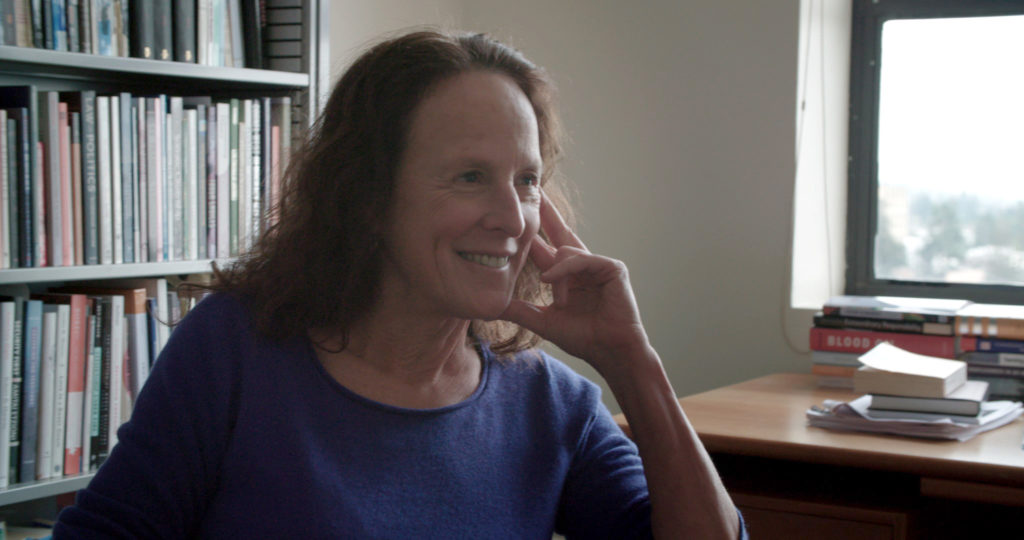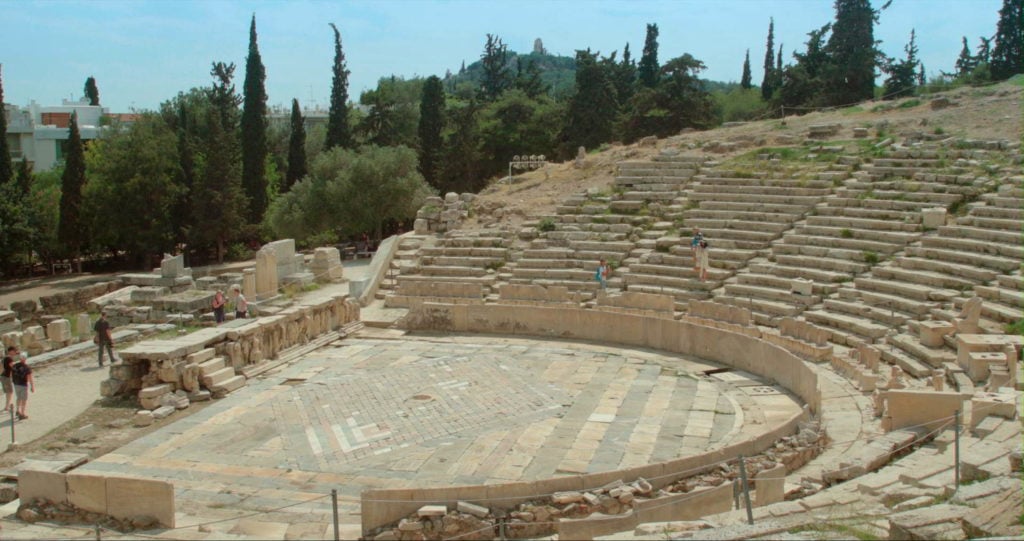Opinion
What Is Democracy? An Experimental New Documentary Looks at the History of an Idea—and Offers a Ray of Hope
Astra Taylor's new film surveys contemporary political breakdown through the lens of philosophy.
![Sylvia Federici [left] and Astra Taylor in What Is Democracy?. Image courtesy Zeitgeist Films. Sylvia Federici [left] and Astra Taylor in What Is Democracy?. Image courtesy Zeitgeist Films.](https://news.artnet.com/app/news-upload/2019/01/what-is-democracy-1024x540.jpg)
Astra Taylor's new film surveys contemporary political breakdown through the lens of philosophy.
![Sylvia Federici [left] and Astra Taylor in What Is Democracy?. Image courtesy Zeitgeist Films. Sylvia Federici [left] and Astra Taylor in What Is Democracy?. Image courtesy Zeitgeist Films.](https://news.artnet.com/app/news-upload/2019/01/what-is-democracy-1024x540.jpg)
Ben Davis

Astra Taylor’s new documentary What Is Democracy?, playing at the IFC Center in New York through January 31, is not about art. It has bigger fish to fry. But an art history lesson is at the heart of it.
In perhaps the key sequence of the film, Taylor, the filmmaker, stands with Silvia Federici, the Marxist-feminist theorist and author of the highly influential book Caliban and the Witch, in the chambers of Siena’s Palazzo Pubblico. They contemplate late Gothic painter Ambrogio Lorenzetti’s Allegory of Good and Bad Government (1338), and discuss the lessons that the fresco holds for understanding the history and the fate of democracy.
Siena is the home to the world’s oldest operating bank. In the late Gothic period it was ruled by a local oligarchy, which commissioned Lorenzetti. The Allegory is a picture, in Federici’s telling, of this financial ruling class’s self-image as it takes form: the wise men of the moneyed class, attended by the figures of Peace, Fortitude, Justice, and Temperance on one side, defined against the chaotic rabble, ruled by a demonic figure, on the other.

Ambrogio Lorenzetti, Allegory of Good Government. Image courtesy of Wikimedia Commons.
At one point, Taylor and Federici inspect a detail: the figure of Justice, with a severed head in her lap, presiding over a group of bound prisoners, heading for execution. It is meant to show the rulers’ legitimacy and their role in keeping order, but Federici points out that we, as viewers, don’t know who the criminals are, or the nature of their crimes.
“I feel like you’ve created a new reading of the painting,” Taylor says. “Suddenly you have turned it on its head. Because what if these are not criminals but protesters, the true democrats?”
This small exchange about the Lorenzetti sums up, more or less, the spirit of What Is Democracy? and what makes Taylor’s serious and intellectually generous new film valuable: The spirit of looking closely at a familiar image, and maybe arriving at some new insights—through dialogue.

Detail of Ambrogio Lorenzetti, Allegory of Good Government, with Justice at right. Image courtesy Wikimedia Commons.
Taylor is one of the very few documentary filmmakers who focuses on philosophy, starting with Zizek! (2005), about the Slovenian Marxist-Lacanian philosopher Slavoj Zizek. That film is a well-constructed version of the “follow an interesting person around” documentary, splitting its time about half and half between Zizek as character and Zizek as thinker, using the former to leverage interest in the latter.
Her follow up, Examined Life (2008), took a more plural approach. Taylor organized the film as eight interviews with prominent contemporary philosophers. Each was interviewed in a setting appropriate to their particular genre of thinking: the propulsive Cornell West in the back of a new York City cab; Kwame Anthony Appiah, theorist of “cosmopolitanism,” in the glimmering nowhere of an airport; Zizek, again, the pop-culture magpie, at a dump.
The effect was more refractive, and a consequence was that Examined Life displaced matters from the story of a single intellectual hero to something more about the conversation among ideas—with a great faith in the audience to look in and decide what made most sense to them.

A protest by immigrants in Athens in What Is Democracy? Image courtesy of Zeitgeist Films.
Ten years on, What is Democracy? both proceeds on from these earlier films’ basic set-up and is something subtly more experimental. The hook is still a threaded series of interviews with different Important Thinkers.
But the approach is both narrower—we’ve moved from the questions of philosophy in general to the title question of democracy—and broader. For now we are not confined just to philosophers, but dip in and out of political events across the United States, in the wake of Donald Trump’s election with all the questions it raises about the fragility of institutions, and Greece, whose interminable political and economic torment provides the backdrop for various discussions of the origins and aporias of the concept of “democracy” and the “demos.”
And so, What Is Democracy? gives you, among others, philosophers Cornell West and Wendy Brown, respectively holding forth on concepts of oppression and sovereignty. But you also listen in on the activist minister William Barber II, head of the Moral Mondays Movement, at a rally. And you have former Greek prime minister George Papandreou, explaining the collision between trans-national financial forces and parliamentary democracy in Greece, as he had to navigate it during the Euro Crisis.

Cornell West in What Is Democracy?. Image courtesy of Zeitgeist Films.
You also visit Opportunity Threads, a communally operated tailor in North Carolina, run democratically by Guatemalan immigrants. You see a group of ER doctors at work in a Miami hospital, debating how to heal the societal breakdown they see all around them. You spend time with Ellie Brett, a formerly incarcerated barber, as he cuts hair and talks eloquently about how the conditions of the prison system have degraded and eroded the meaning of democracy.
The point of this sequencing together of figures is clearly a leveling one. What Is Democracy? is a film exploring the idea of “democracy,” and so, fittingly, it gets away from the rather imperious idea of a master thinker offering the readymade master code. Instead it offers something… well, it would be an abuse of a term to call it “democratic.” But definitely something more demotic.

A protest sign in Greece. Image courtesy of Zeitgeist Films.
From the title on down, What Is Democracy? is a film of questions not answers. Don’t get me wrong, there are provocative ideas to hold onto in it—but it passes through many debates and venues without arriving at an overarching answer about what needs to be done or undone. As a consequence, my guess is that everyone will have some idea about what they think its answer should have been (shoot, if you grilled me, I might even have some of my own).
But that, I think, is to miss what is the basic project of the film, which comes in its form, not its content. In this film, Taylor is more present as a character than before. Not in a Michael Moore, filmmaker-as-protagonist way. But as a presence, a voice asking questions behind the lens, a figure engaged in conversation and being very open about not having the answer, about looking for answers.
“I personally even wrested a bit with making this the theme of the film,” Taylor tells Wendy Brown, the Berkeley political theorist, in the film, “but I kept returning to democracy.”

Wendy Brown in What Is Democracy?. Image courtesy of Zeitgeist Films.
What Is Democracy? is a film of ideas, and it is pitched at the kind of people who would go to a film of ideas: students of political philosophy; intellectuals or would-be intellectuals. But its entire point is to cut against the pedantic narrowness that tends to infest the conversation when debates about political theory leak out from the academy into the public, the my-theory-is-bigger-than-yours tone that repels people who aren’t fully up on their Butler or Fanon or Marx, which inhibits the bringing in of new people that is the lifeblood of social change.
As I watched Taylor’s film, I kept comparing it to Adam Curtis’s 2016 opus HyperNormalisation, another documentary about the breakdown in contemporary political certainties. That film caught fire in the wake of Trump’s election, stitching decades of spooky historical footage together into a master theory about the erosion of political meaning in Western capitalist democracies. Each chapter of the film adds a piece to a big thesis about how any sense of common social narrative has retreated, undone by neoliberal pressures and political perfidy, all of it paving the way for the post-reality authoritarianism now rising all around.
Curtis’s film is compelling—because it seems to offer an answer for everything. But the thing is, you also leave it totally disempowered, in particular about the potential of popular change. The model of intellectual engagement that it implicitly role-models is simply furthering the work of finding the master pattern in everything, asserting and reasserting the knowledge that the fix is in.

The Agora in Athens. Image courtesy of Zeitgeist Films.
What Is Democracy? doesn’t offer a connecting theory. Its attitude is entirely more Socratic, asking questions and finding possibility in the questioning. In its construction, Taylor’s film conveys the sense of trying to connect a not-at-all automatic circuit between philosophy and the politics of daily life; that listening to various people, finding the many languages and vocabularies through which problems are articulated, is the precondition for an actual conversation about ideas that is meaningful, in its widest and most transformative sense.
And as a result it feels much more empowering. You emerge from it without a master theory, but with a sense that there is a conversation about the state of democracy that you might enter into, and that is actually welcoming—even to people who have questions. What Is Democracy? does not offer the answer to the question of its title. But the way that it phrases the question is invaluable.